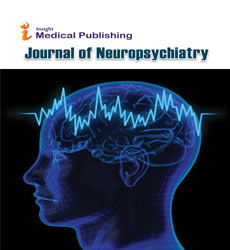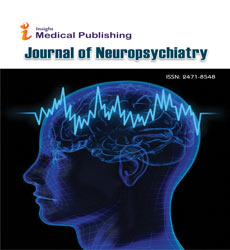The Electroactive Signal for the Tau Peptide- Part 2: Neuromolecular Imaging (NMI): A LIVE Nanotechnology for Alzheimer, Parkinson and Epilepsy Disease: The BRODERICK PROBEïÿý Biosensor Images the Effects of the Pharmaceutical, L-DOPA, in Long-Term Neurodegeneration in Parkinson Subjects
Patricia A. Broderick
Abstract
The Tau peptide and its reported six Tau isoforms are known to be present in the brain of Alzheimer and Parkinson patients with Lewy Body disease as well as in the brain of the epilepsies including autism. The BRODERICK PROBE® can and does see the Tau peptide. Imaging is fast and one can see it readily in subjects affected with Tau disease. To this point, previous post mortem studies have assayed Lewy Bodies, alpha synuclein, the amyloid precursor proteins and Tau but the limitations of “life after death” (post mortem) may not be optimal because these process are different after death. There is a need to cure the dementia of tauopathies! The BRODERICK PROBE series of biosensors work by electrochemical detection and are comprised of carbon and/or carbon allotropes in one example and fiber optic proteins in another of the many examples. In the present study, the original carbon sensors, the carbon/lipid/phosphotidyl polymers were used to neuromolecular image Tau LIVE. The nanoprobe is unique from others as it is so tiny that it can be used anywhere in the brain and spinal cord and for any length of time; the operationally stable biomedical biosensors/nanoprobes do not cause gliosis (scar tissue) nor do they produce infection (bacterial growth). Thus, the LIVE electroactive image for Tau in the precise striatal basal neurons of the living Parkinson subject was studied. When L-3,4 dihydroxyphenylalanine (L- DOPA) was administered intraperitoneally to Parkinson subjects who were in long term neurodegeneration, the electroactive signal for Tau increased significantly above the nanoampere detection limits. L-DOPA is predicated to help the Parkinson subject improve motor coordination and cognition as well as to enhance mood. The increase in Tau may seem to be beneficial and further study is needed to decipher which of the affects have been improved. Thus, Tau is further elucidated after therapy as a dynamic redox reaction occuring LIVE in the brain of the living Tau patient and animal via the BRODERICK PROBE® The paper is due to appear in Medical Research Archives, in progress 2021-2022 as well as in Prominent Papers in Psych, an MDPI open access journal, also in 2021-2022.

Open Access Journals
- Aquaculture & Veterinary Science
- Chemistry & Chemical Sciences
- Clinical Sciences
- Engineering
- General Science
- Genetics & Molecular Biology
- Health Care & Nursing
- Immunology & Microbiology
- Materials Science
- Mathematics & Physics
- Medical Sciences
- Neurology & Psychiatry
- Oncology & Cancer Science
- Pharmaceutical Sciences
